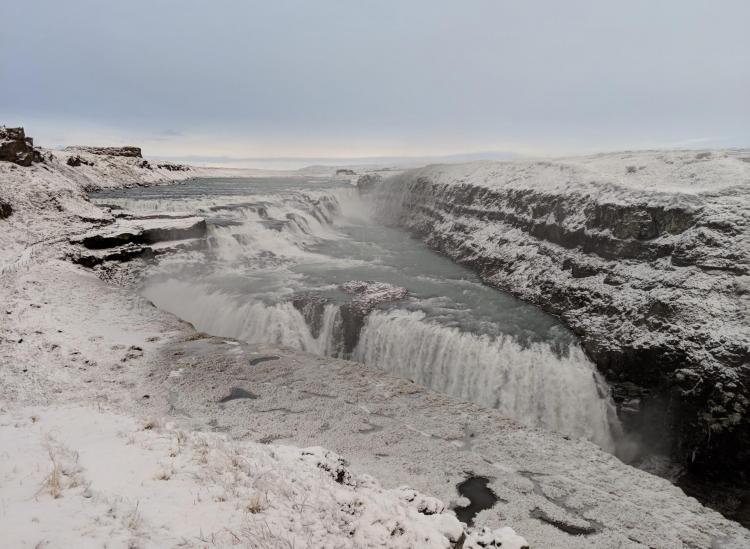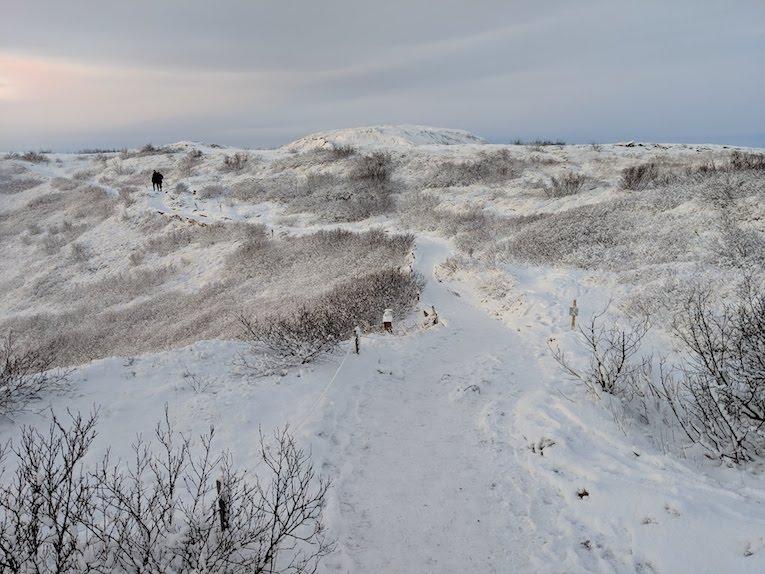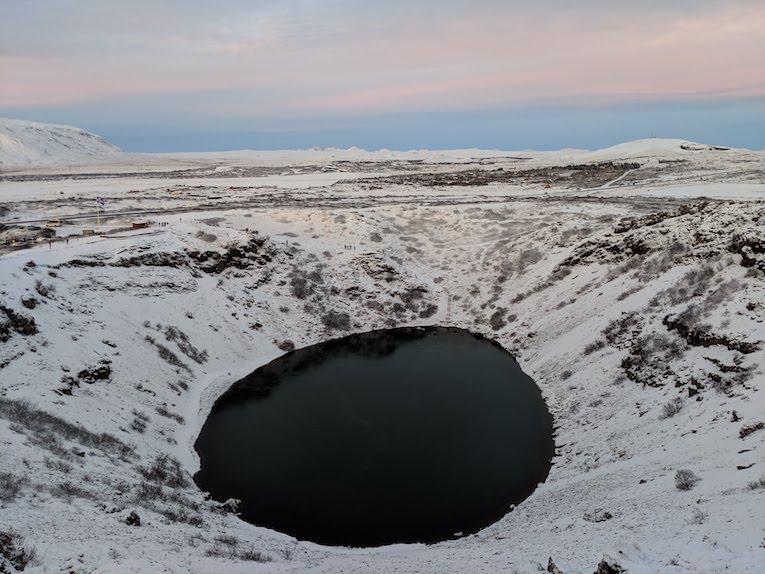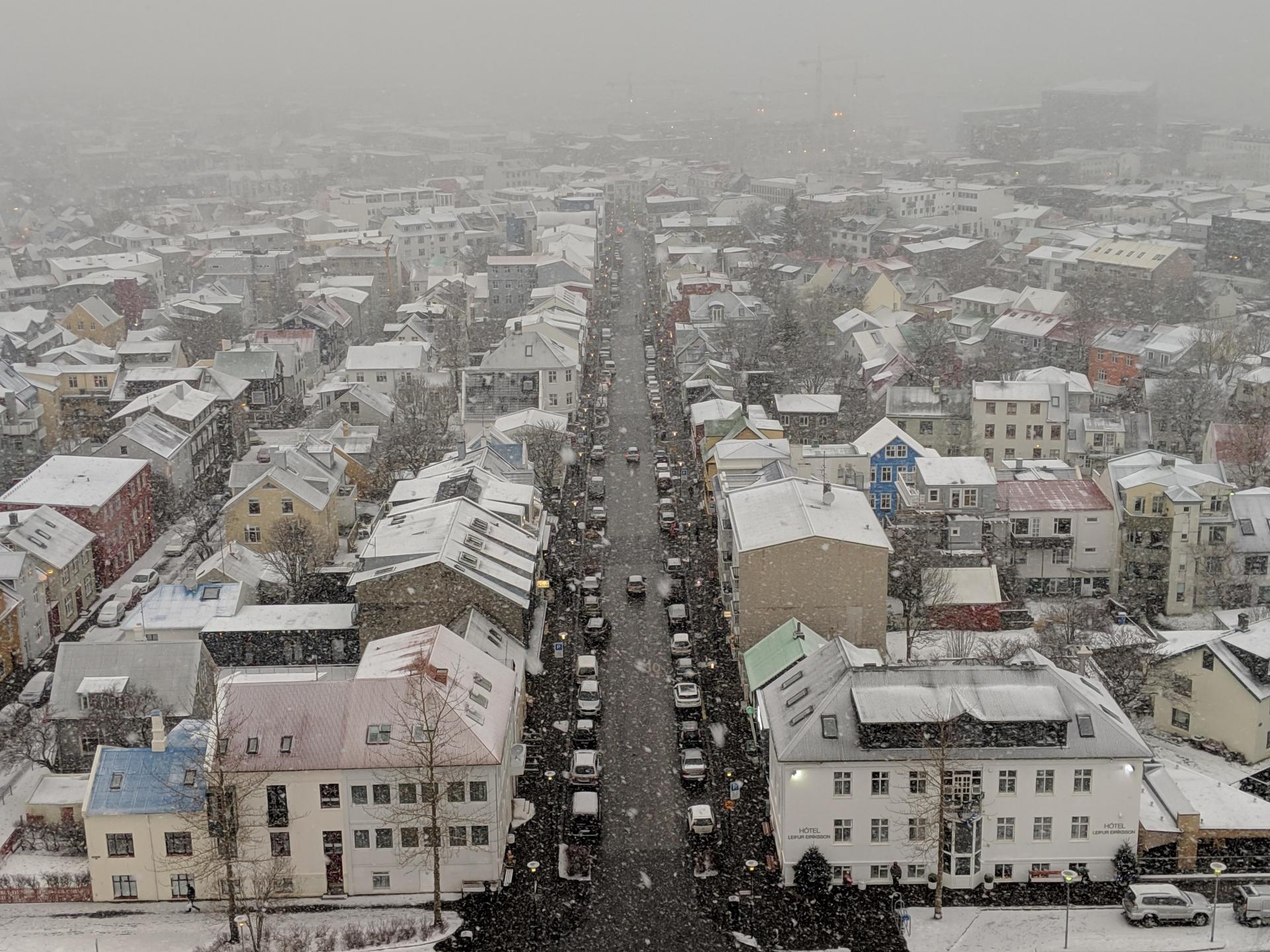Why You Should Visit Iceland In The Winter

Libby Ryan
Tell anyone you’re headed to Iceland in the dead of winter, and they’ll probably give you a dire warning about frostbite and consider your sanity to be a bit off. But after exploring the country in January, we stand by our chilly choice. Iceland is spectacular in the winter and there are even some reasons to visit that are only available in winter.
Snowy Landscapes
We can’t promise a full foot of the white stuff on an Icelandic vacation from November to March, but your odds are good for seeing a horizon covered in snow during these cold months. While the country has become famous lately for its bright green cliffs, the sweeping mountain vistas are equally as stunning in the stark snow.

Libby Ryan
Cozy Coffee Shops
You might need some caffeine to fuel you through the long, dark hours of an Icelandic winter, and that’s actually something to be very excited about here. There are nearly endless cozy coffee shops where you can get a bracing mug of black coffee to ready yourself for a day of outdoor exploring or an expertly poured latte once you get inside after a day in the snow.
Cafe Babalu along Reykjavik’s main walking street is the coziest coffee corner you’ll find in the entire city. Unlike the sleek minimalism of many Nordic-style coffee bars, Babalu subscribes to the maximalism model of cozy, and we couldn’t imagine a better place in which to sip a hot chocolate (don’t forget the whipped cream).
Frozen Waterfalls
You can’t visit Iceland without making an extensive waterfall sightseeing list. But the waterfalls in the winter have an extra magical layer. The spray from the falls turns into dramatic ice formations around the sites. Think ice coating every surrounding surface. But a word of warning: Those surfaces include sidewalks, guardrails and railings, so be careful when wandering around and keep your waterfall wits about you.

Libby Ryan
Hot Springs And Geysers
Imagine hopping into a steaming hot tub in the middle of the winter. Now imagine that hot tub is enormous and powered by geothermal energy. That’s what you can expect from the public hot spring-fed pools in Iceland. The Blue Lagoon is the most famous of these thermal pools, but we love the Secret Lagoon for its more natural and wild feel.
If you want to see real wild hot springs, there are many that get so hot that they’d boil your hand if you got too close. The geysers also shine in the winter, with the steam given off by the erupting hot springs billowing into the frigid air.
Ice Caves
Want to take your adventuring to the next level? Book a tour to an ice cave. The frozen caverns shine bright blue and are otherworldly. These caves aren’t the kind of wild landscape you can explore alone. You often need special gear and a guide to keep you on the safe side of the winter wonderland.
Icelandic Outfits
Icelandic wool creates iconic Icelandic fashion. And if you have a big, bulky sweater at home, now is the time to break it out. And if you don’t have a big, bulky sweater, you can buy one in Iceland. However, since this is a traditional craft in Iceland, you’ll pay a pretty penny for your brand new outfit. Expect around $100 for a basic design and more for a hand-knitted version.

Libby Ryan
Hearty Meals
You’ll want some filling food after braving the Arctic temperatures of Iceland’s winter. But you’re in luck — this country boasts a hearty food culture. Many plates include freshly caught fish, lamb or even reindeer meat, often served with potatoes and other roasted veggies. You won’t go hungry here.
Northern Lights
Catching a glimpse of the northern lights is like winning the lottery. You need the perfect conditions (cold, clear skies), as well as the luck of taking a trip when the solar flares are likely to produce the beautiful phenomenon. To maximize your chances, try to position yourself far away from any artificial lights. The aurora borealis shines brightest on its own.
RELATED
This Sleek Airbnb Completely Blends Into The Icelandic Wilderness
Reykjavik, Iceland Can Bust Your Budget — Here’s What To Expect











